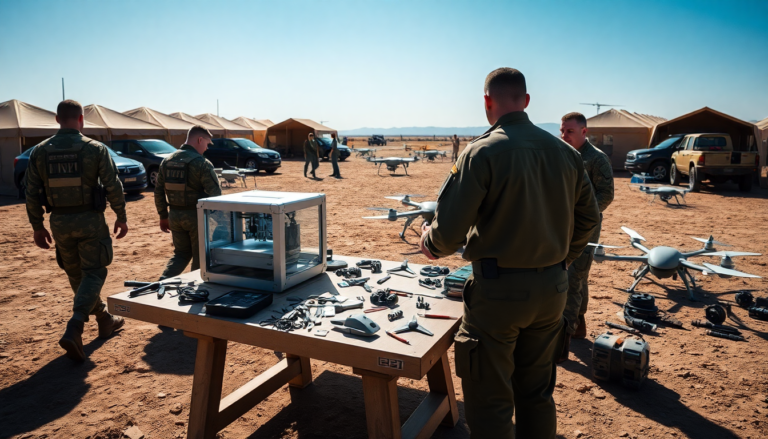Argomenti trattati
Imagine a battlefield where soldiers can whip up drone parts on the fly, turning a broken piece of tech into a fully functional machine in no time. Sounds like a sci-fi flick, right? But welcome to the grim reality of modern warfare, where the US Army is flipping the script on traditional logistics. Lieutenant General Chris Mohan, the man steering the Army’s Material Command, recently spilled the beans on how 3D printing is reshaping military operations. Spoiler alert: it’s a wild ride.
The tactical edge of 3D printing
It’s not just about fancy gadgets; it’s about survival. The Army’s not just tinkering with 3D printers for kicks. No, they’re jamming them into forward operating bases. Picture this: a soldier in the midst of chaos, and instead of waiting for parts to arrive through the usual supply channels, they hit ‘print’ and voilà! They’ve got a replacement rotor blade or even a drone body ready to go. The sheer audacity of it all! Mohan highlights the plug-and-play nature of these devices, which are anything but ordinary. It’s like having a mini factory right in the trenches—who needs a supply chain when you can print what you need?
From files to functionality
Let’s talk tech. 3D printing isn’t just magic; it’s a meticulous process. It’s about having the right files and settings. Mohan explains that all it takes is the right digital blueprint—just a few clicks, and you’re good to go! And sure, you might think it’s all straightforward, but are you really ready to handle the g-code? That’s like asking if you can drive a car—sure, but can you fix it when it breaks down? The Army’s approach is a tad more complicated than your average weekend DIY project. But hey, necessity is the mother of invention, right?
Replacing the unreplaceable
Crashed drones? No problem! Mohan points out that the versatility of 3D printing doesn’t stop at just creating new drones; it’s about replacing broken parts, too. Need a propeller? Bam! It’s printed. Broken rotor? Print it! This isn’t just convenient; it’s a game changer. The idea of being able to replace critical components on a whim, especially in the line of fire, is nothing short of revolutionary. And while we’re at it, let’s not ignore the fact that this tech isn’t limited to drones; troops can print almost anything they might need. Talk about a toolkit!
The drone delivery system
Now let’s spice it up with a little drone-to-drone action. Mohan also hints at a future where drones deliver freshly printed components right to the front lines. It’s like an Amazon Prime delivery, but with more explosions and less waiting. The interplay between these technologies could lead to a battlefield where logistics are smoother than ever, and soldiers aren’t left scrambling for spare parts. But then again, isn’t it a bit unsettling that we’re so reliant on these machines? What would happen if they failed? Is the Army putting all its eggs in one basket? Food for thought.
Future plans: UAS factories
The government’s got big dreams, and Mohan isn’t shy about sharing them. There’s talk of a centralized UAS factory, where they can churn out drone bodies and, if Mohan gets his way, even electronic components like motors. This is all about keeping production close to home—forget about outsourcing to the highest bidder. It’s about independence, folks! But can the Army really pull this off? Are they ready to take on the challenges of domestic production? The stakes are high, and the pressure is on.
So here we are, on the precipice of a new era in military tech. The integration of 3D printing and drones is not just a trend; it’s a necessity in modern warfare. But as we marvel at these advancements, one can’t help but wonder: are we really prepared for what’s coming? The future is bright, but it’s also very, very complicated.

